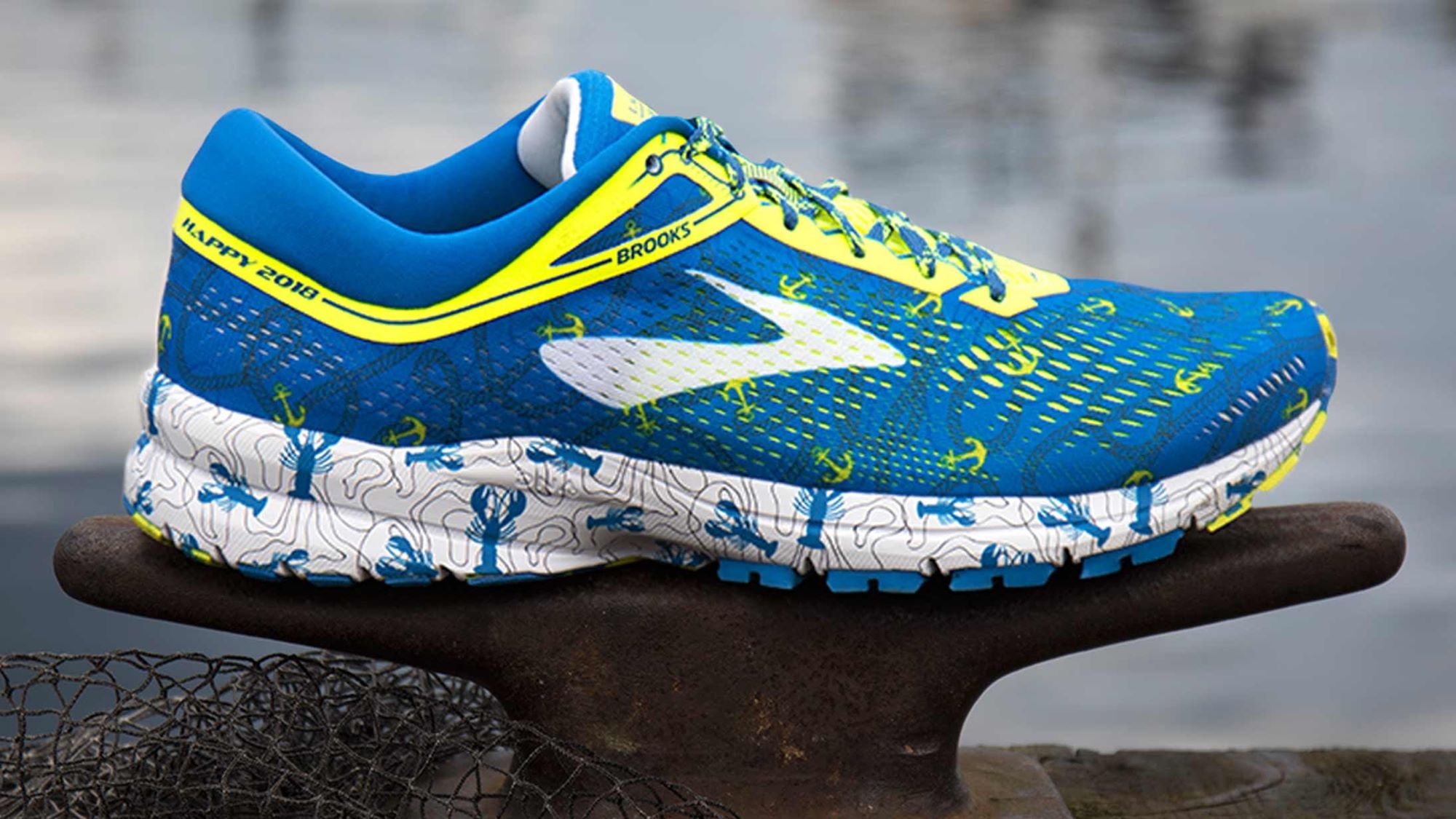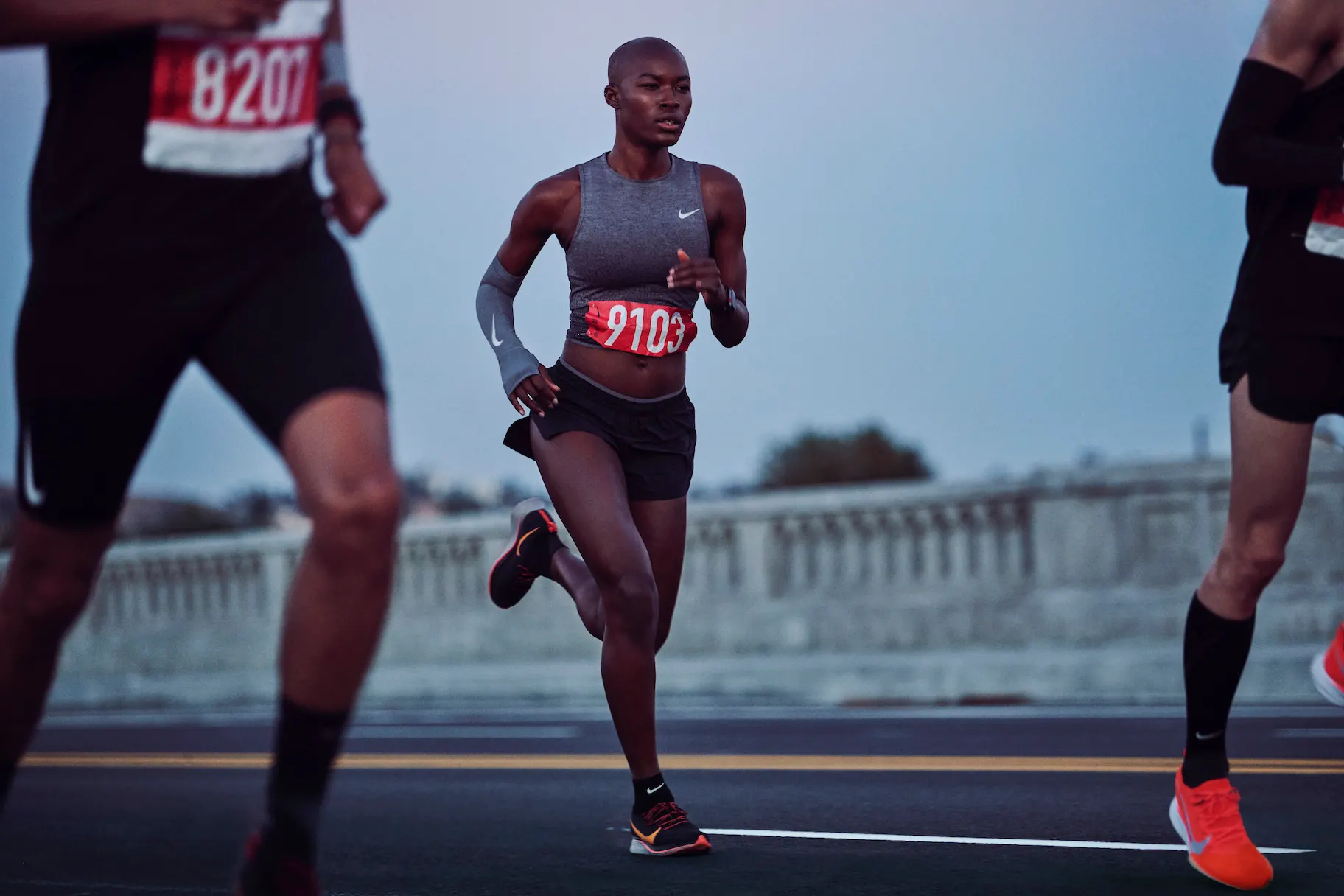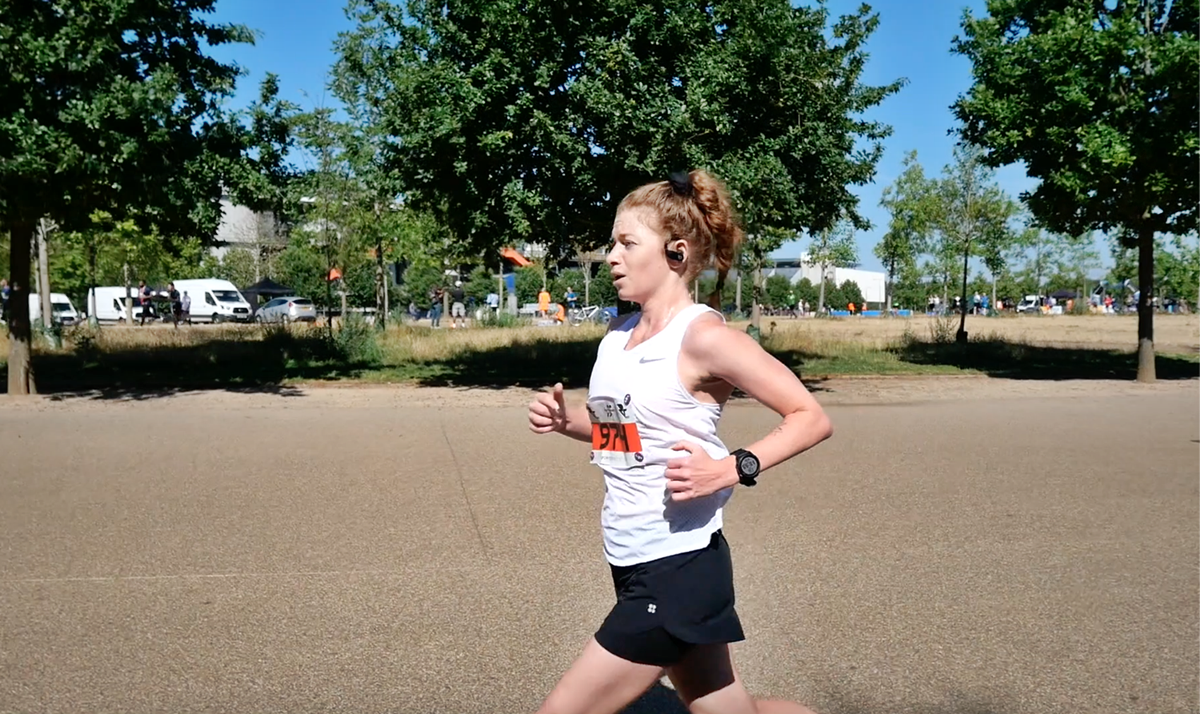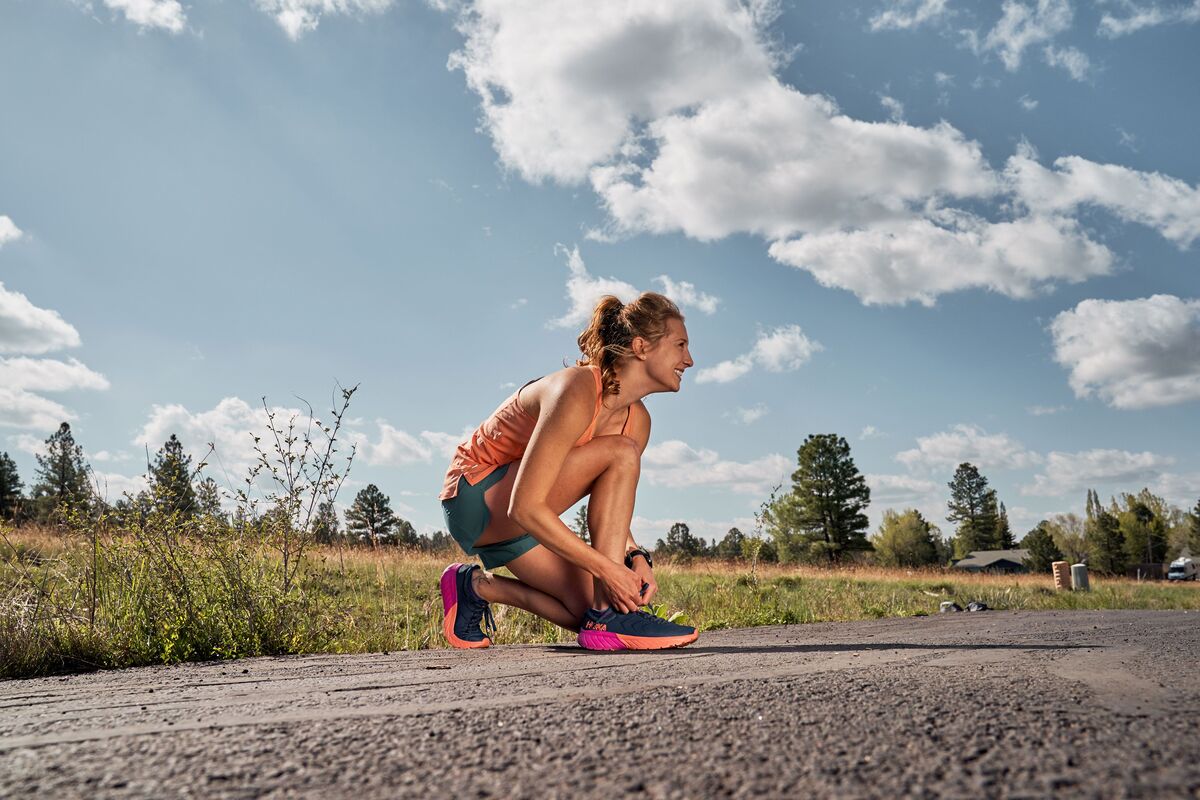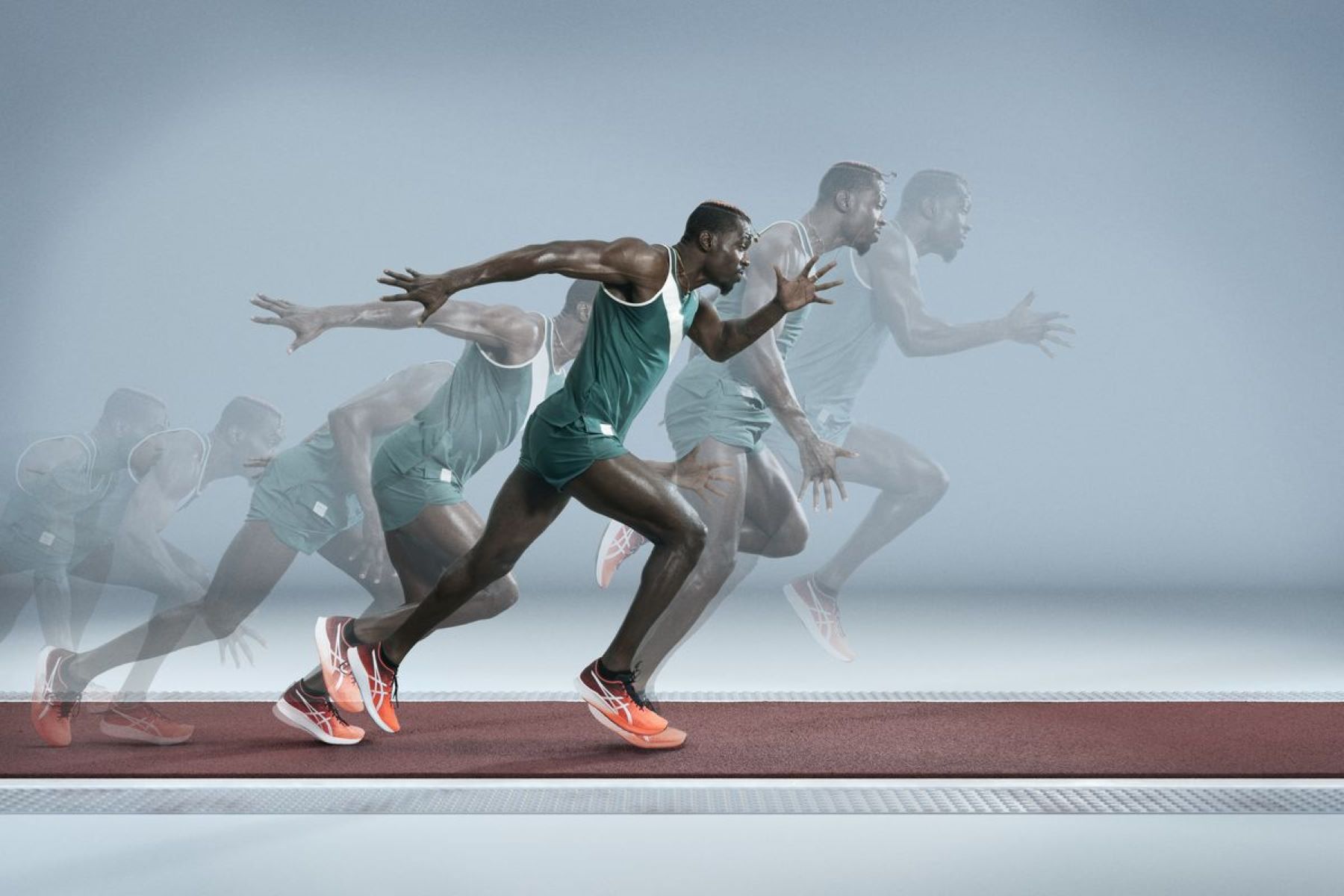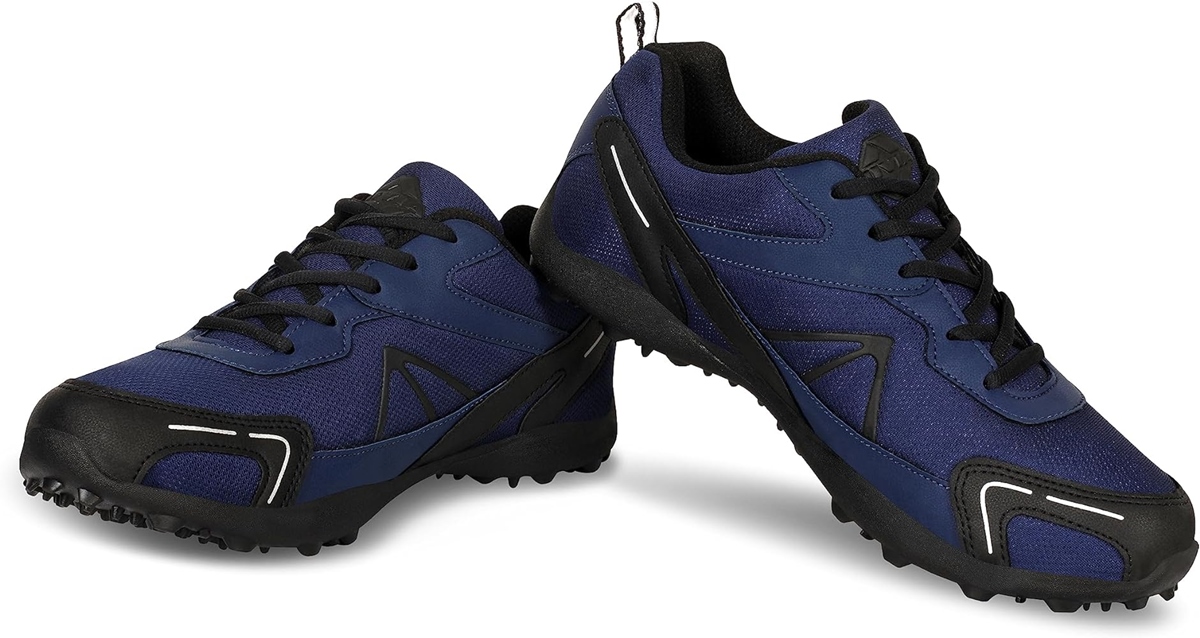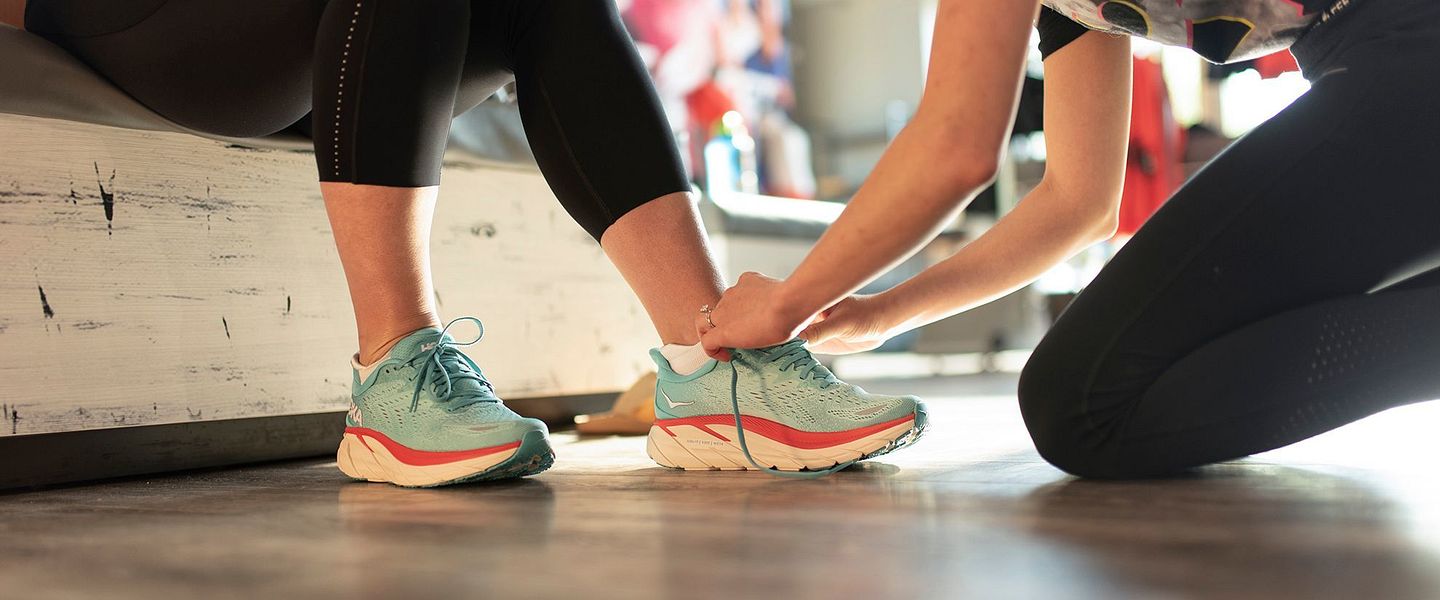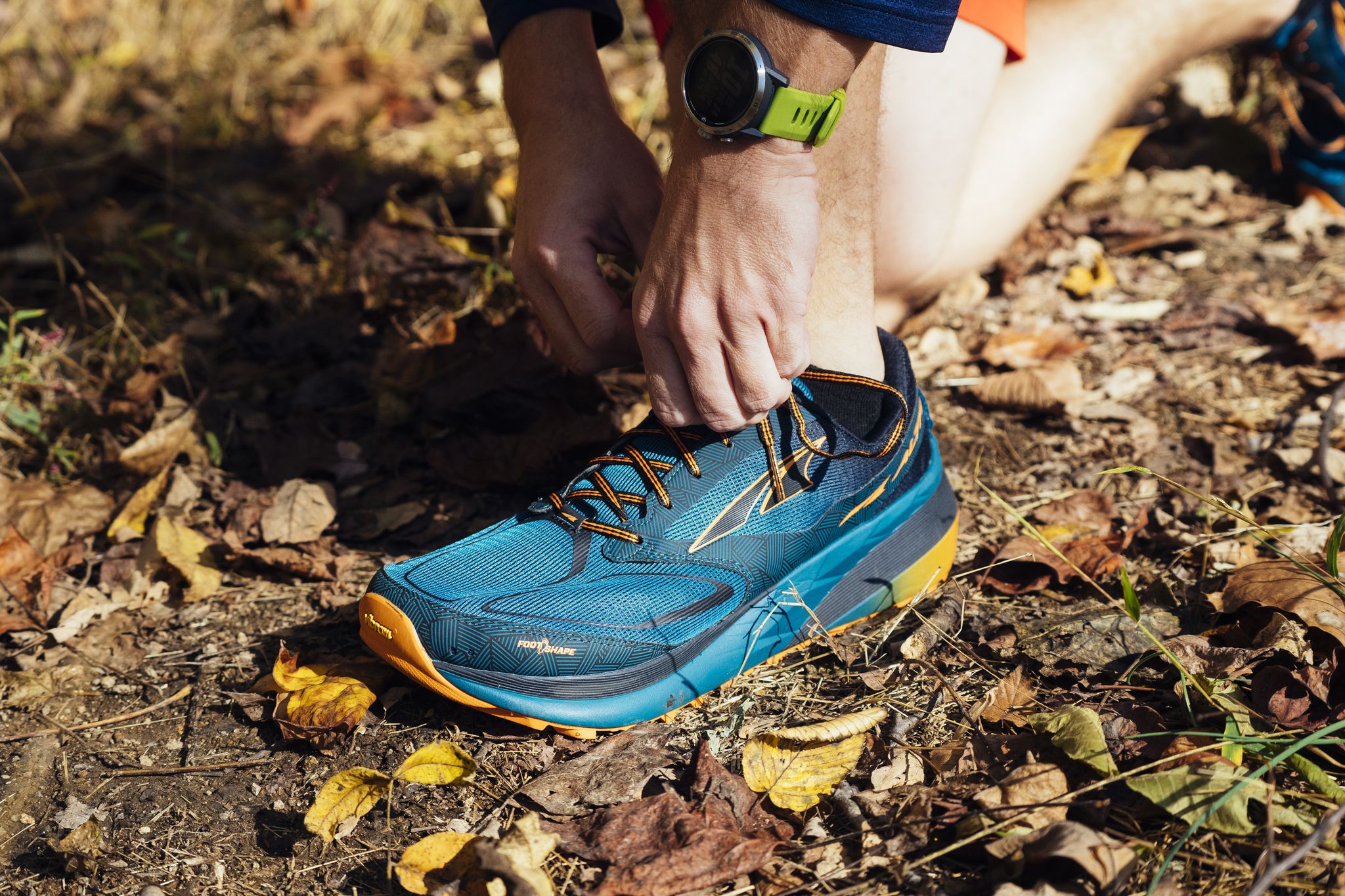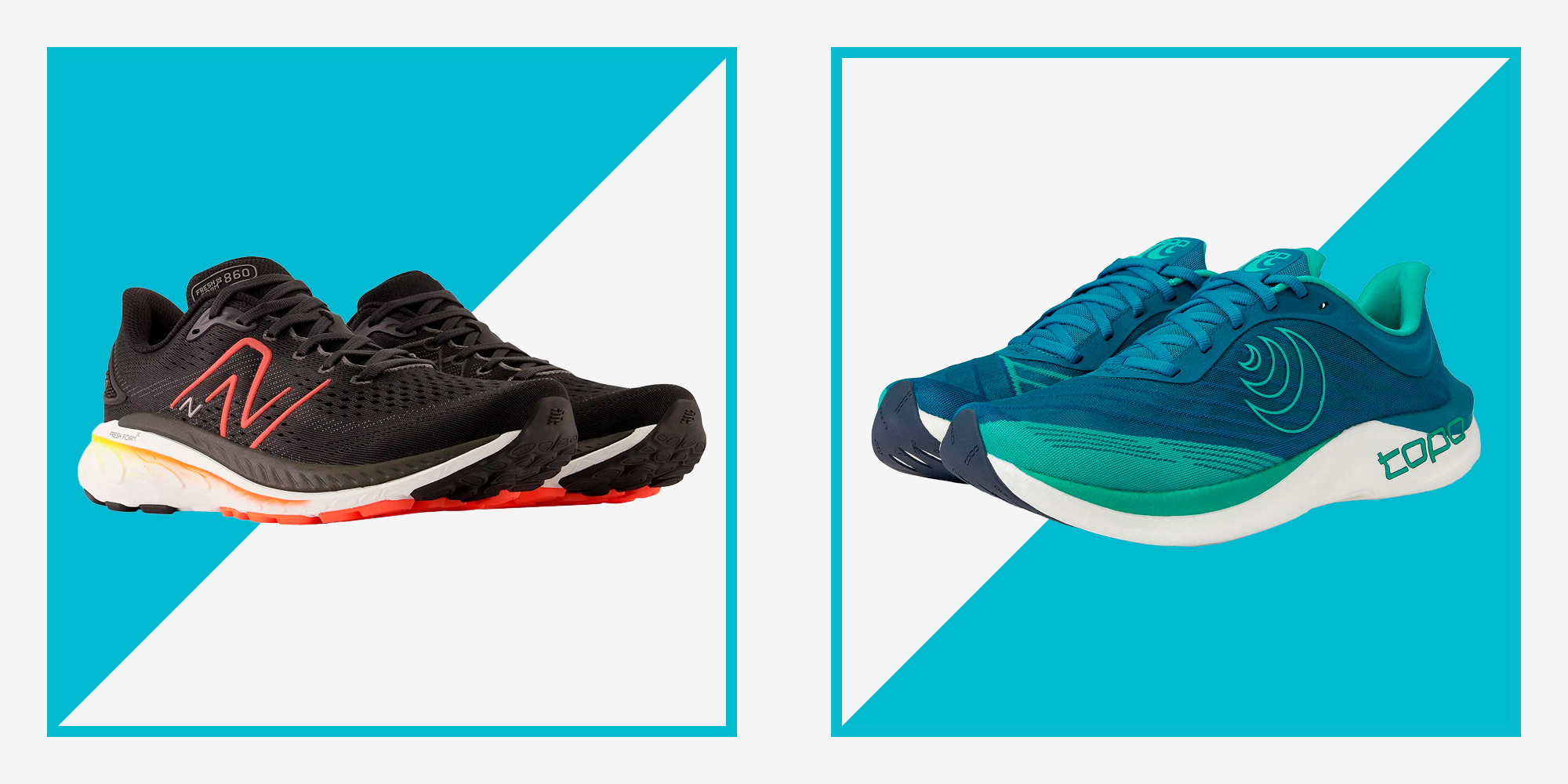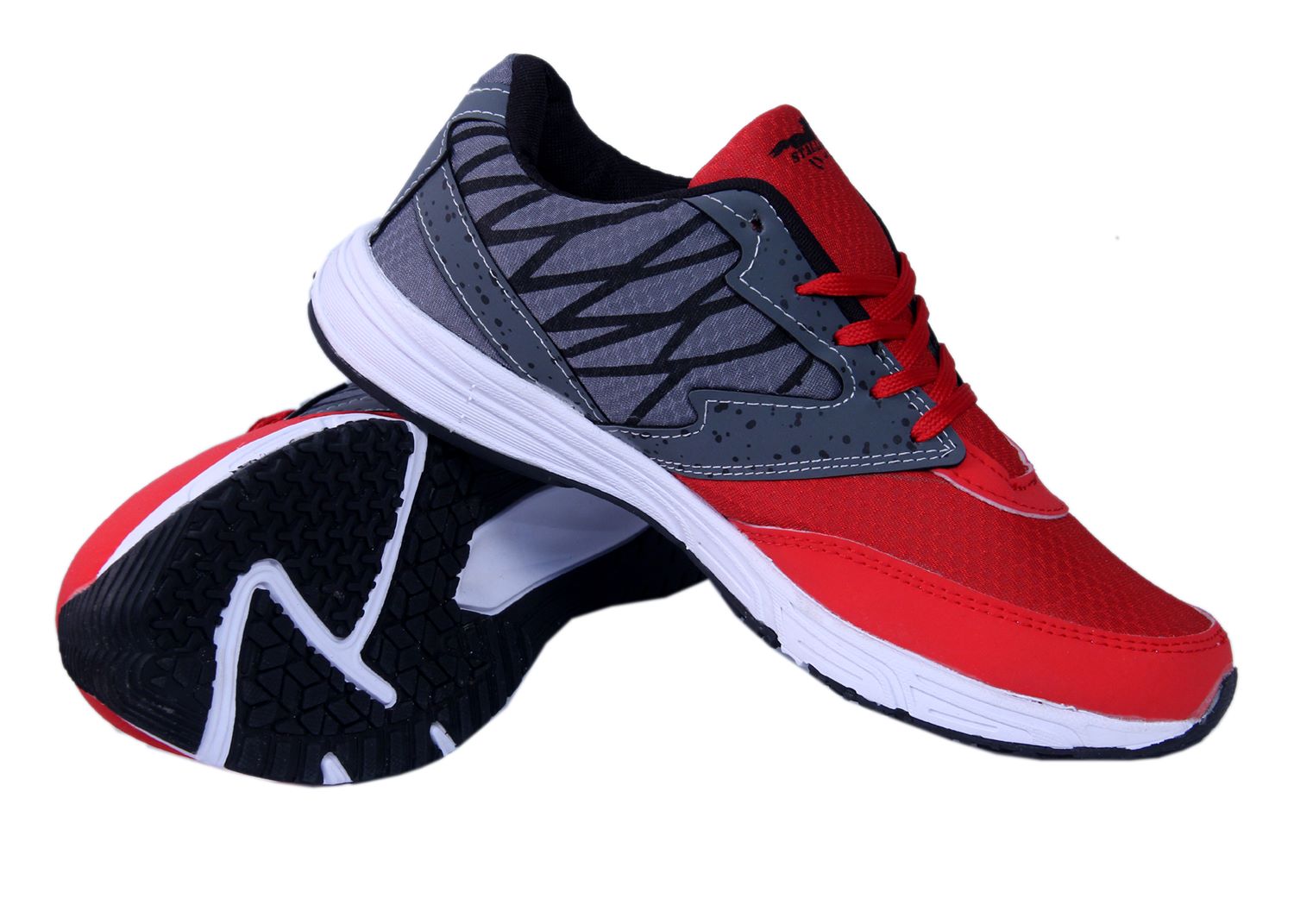Home>Misc>Featured>Why Are My Running Shoes Giving Me Blisters
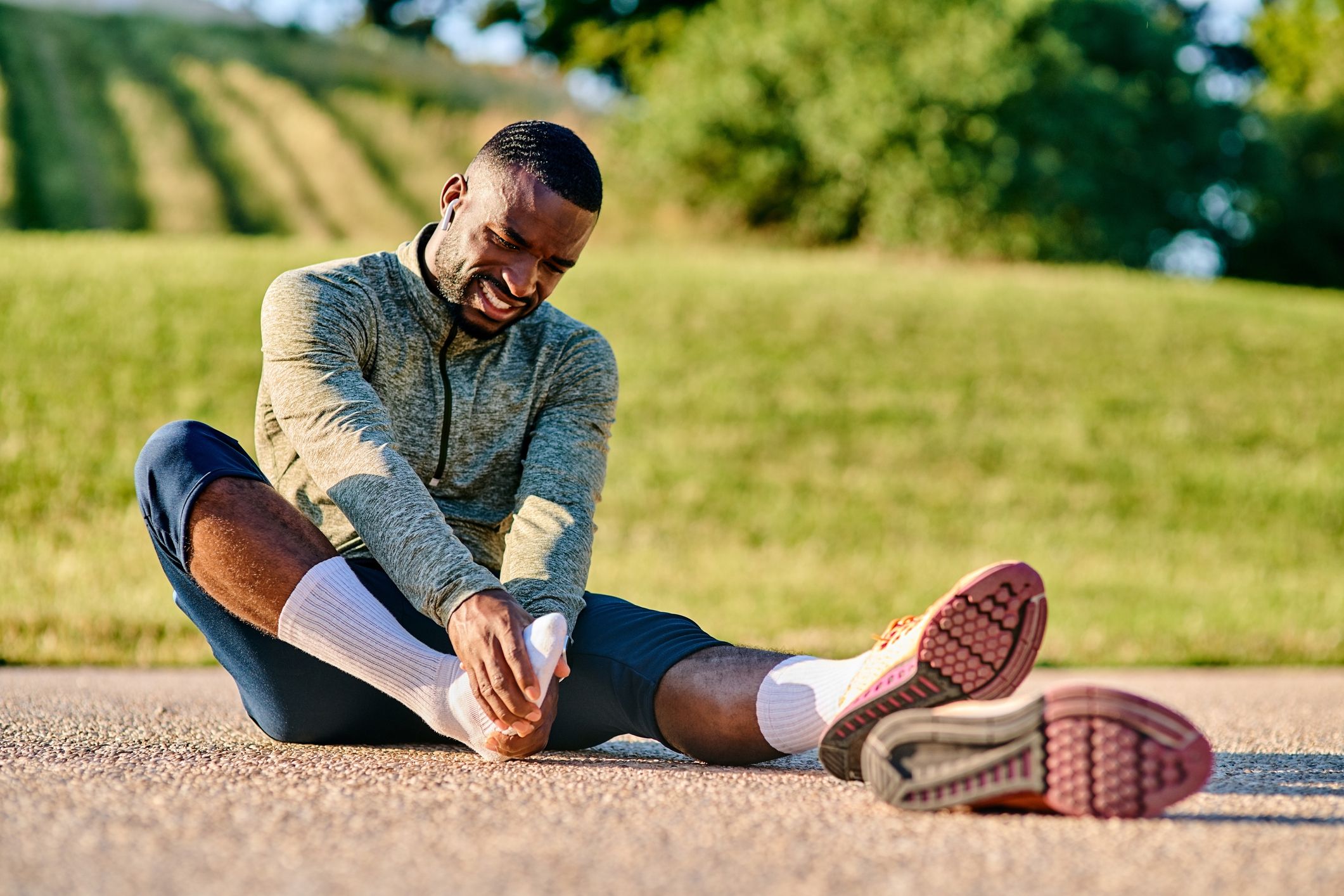

Featured
Why Are My Running Shoes Giving Me Blisters
Modified: May 22, 2024
Discover the reasons why your running shoes might be causing blisters and learn how to prevent them. Featured tips and advice to keep your feet happy and blister-free.
Introduction
Running shoes are essential gear for any runner. They provide cushioning, support, and protection during the physical demands of running. However, what happens when your trusty running shoes start causing you blisters? Blisters are painful, irritating, and can significantly hinder your running experience.
In this article, we will explore the reasons why running shoes can cause blisters and offer practical tips to help you prevent and alleviate blister formation. Understanding the factors that contribute to blisters from running shoes will enable you to make informed decisions when selecting and wearing your running shoes.
Whether you are a seasoned runner or just starting out, it is crucial to have a comfortable and well-fitting pair of running shoes. Your feet are your foundation, and the wrong shoes can lead to discomfort, injuries, and blisters.
By understanding how running shoe fit affects blister formation and implementing the right strategies, you can ensure a pain-free and enjoyable running experience.
In the following sections, we will delve into the various aspects of running shoe fit, the common mistakes people make when choosing running shoes, and the specific reasons why running shoes can cause blisters. Additionally, we will provide practical tips and solutions to help you prevent blisters from occurring in the first place.
Understanding Running Shoe Fit
Proper running shoe fit is crucial for preventing blisters and ensuring overall comfort and performance. When it comes to choosing running shoes, there are a few key factors to consider:
- Size: Running shoes should typically be about a half-size larger than your regular shoe size to accommodate the natural swelling of the feet during exercise. However, it’s important to also consider the specific brand and model as sizing can vary. Always try on shoes and take note of how they feel on your feet.
- Width: Along with length, the width of a running shoe is essential for achieving a proper fit. If your feet are too wide for the standard width, you may experience discomfort, blistering, or even foot deformities over time. Look for shoes that come in multiple width options.
- Arch Support: The arch of your foot plays a significant role in how you distribute weight and absorb shock when running. Different shoes offer varying levels of arch support, so it’s essential to know your foot type (low, medium, high arch) and find a shoe that caters to your specific needs.
- Toe Box: The toe box refers to the spaciousness in the front area of the shoe where your toes sit. A roomy toe box allows your toes to splay naturally, preventing friction and pressure points that lead to blisters. Consider the shape of your foot and look for shoes that provide adequate room for your toes to move freely.
- Heel Counter: The stability and support of the heel counter can impact your overall comfort and reduce the likelihood of blisters. Look for a shoe with a well-padded and snug-fitting heel counter to minimize excessive rubbing and friction.
Remember, everyone’s feet are unique, and what works for someone else may not work for you. Paying attention to these factors and seeking professional advice, such as visiting a specialty running store, can greatly assist you in finding the perfect fit for your feet.
Now that we’ve covered the basics of running shoe fit, let’s explore some common mistakes many people make when choosing their running shoes.
Common Mistakes in Choosing Running Shoes
Choosing the right running shoes can be a daunting task, especially with the wide range of options available. However, by avoiding these common mistakes, you can significantly increase your chances of finding the perfect pair that will keep your feet blister-free:
- Not getting properly measured: Many people assume they know their shoe size, but it’s essential to get your feet measured regularly. Our feet can change in size and shape over time, and selecting the wrong size can lead to discomfort and blisters.
- Ignoring your foot type: Each person has a unique foot type, and understanding yours can guide you in selecting the right shoes. Factors such as arch height, pronation (how your foot rolls inward), and foot width should all be considered when choosing running shoes.
- Skipping the fitting process: Trying on shoes in the store is crucial to ensure proper fit and comfort. Don’t rely solely on online reviews or recommendations. Take the time to walk or jog around the store to assess how the shoes feel on your feet.
- Choosing style over function: While aesthetics are important, prioritize function over style when it comes to running shoes. Don’t make the mistake of selecting a pair solely based on looks, as this can lead to discomfort and potential blister formation.
- Not considering your running surface: The type of surface you primarily run on should influence your shoe selection. Different running shoes are designed with specific terrains in mind, such as road-running shoes for pavement or trail-running shoes for off-road trails. Choosing the wrong shoe for your running surface can result in blisters.
- Not replacing worn-out shoes: Running shoes have a limited lifespan, and using them beyond their recommended mileage can lead to reduced cushioning and support, increasing the risk of blisters. Keep track of the mileage and replace your shoes when they have reached the end of their life cycle.
By being aware of and avoiding these common mistakes, you can make more informed decisions when selecting your running shoes. Now, let’s explore the specific reasons why running shoes can cause blisters.
Reasons Why Running Shoes Cause Blisters
Blisters are a common annoyance for runners, and the shoes you wear can play a significant role in their formation. Here are some reasons why running shoes can cause blisters:
- Improper Shoe Size: Wearing running shoes that are too small or too large can lead to friction and rubbing, which can result in blisters. Shoes that are too tight can squeeze your feet, creating pressure points, while shoes that are too loose can cause your feet to slide and rub against the material.
- Poor Shoe Materials: The materials used in running shoes can also contribute to blister formation. Shoes made with rough or stiff materials can cause friction against the skin, leading to blisters. It’s important to choose shoes made with breathable, flexible, and moisture-wicking materials to reduce friction and provide comfort.
- Wrong Shoe Design for Foot Type: Different foot types require different types of shoe designs. Using the wrong shoe design for your foot type, such as having inadequate arch support or not enough stability for overpronation, can result in excessive friction and rubbing, leading to blisters.
- Overpronation and Underpronation: Pronation refers to how your foot rolls inward as you walk or run. Overpronation, where your foot rolls excessively inward, or underpronation, where your foot doesn’t roll inward enough, can both contribute to blisters. It’s important to choose running shoes that provide appropriate support and alignment for your specific pronation type.
To prevent blisters caused by running shoes, it’s essential to address these factors. Choosing the right shoe size, opting for shoes made with high-quality materials, selecting the appropriate shoe design for your foot type, and considering pronation are all crucial steps in preventing blister formation.
In the next section, we will provide practical tips to prevent blisters from running shoes, ensuring a comfortable and enjoyable running experience.
Improper Shoe Size
Wearing running shoes that do not fit properly is one of the most common causes of blisters. Whether the shoes are too small or too large, improper sizing can lead to friction, pressure points, and rubbing, resulting in blister formation.
When running in shoes that are too small, your feet can become cramped, causing the toes to rub against the front of the shoe. This constant friction can lead to the development of blisters on the toes or the ball of the foot. Additionally, tight-fitting shoes can also compress the foot, increasing the chances of blisters occurring on the sides or top of the foot.
On the other hand, wearing shoes that are too large can cause your feet to slide around inside the shoe. This movement can create friction and rubbing, particularly in areas where the shoe doesn’t provide a secure fit. Blisters commonly form on the back of the heel or at the base of the toes when the foot repeatedly slides forward or backward in excessively large shoes.
To avoid blisters caused by improper shoe size, it’s crucial to be aware of your foot measurements and select running shoes that fit properly. Here are some tips to ensure you have the correct shoe size:
- Get your feet measured regularly: Our feet can change in size and shape over time, so it’s essential to have your feet measured by a professional or use a measurement guide when purchasing shoes online.
- Try on shoes later in the day: Feet tend to swell throughout the day, so trying on shoes in the afternoon or evening when your feet are larger can help you select the right size that accommodates this natural swelling.
- Leave a thumb’s width of space: When trying on running shoes, make sure there is around a thumb’s width of space between your longest toe (usually the big toe) and the front of the shoe. This ensures there is enough room to prevent excessive rubbing and friction.
- Consider width options: In addition to length, width can also impact the fit and comfort of running shoes. If you have wider feet, opt for shoes that come in various width options to provide enough room and prevent pressure points.
By choosing running shoes that fit properly, you can greatly reduce the risk of blisters. Remember, everyone’s feet are unique, so it’s important to find a size that works for you and provides the necessary space and support.
In the next section, we will explore the role of poor shoe materials in causing blisters and how to choose shoes made with the right materials.
Poor Shoe Materials
The materials used in running shoes can greatly influence your risk of developing blisters. Shoes made with poor-quality or inappropriate materials can cause friction, rubbing, and discomfort, increasing the likelihood of blister formation.
When selecting running shoes, it is important to consider the quality and properties of the materials used. Here are some factors to keep in mind:
- Material Texture: Rough or abrasive materials on the inside of the shoe can cause friction against the skin, leading to blisters. It’s crucial to look for shoes made with smooth and soft linings that will minimize friction and rubbing.
- Breathability: Shoes that do not allow for proper ventilation and moisture-wicking can contribute to blisters. When your feet become sweaty, the moisture can soften the skin, making it more susceptible to friction and blister formation. Choose shoes made with breathable materials like mesh to keep your feet dry and cool during your runs.
- Flexibility: Shoes that are too stiff can restrict natural foot movement, leading to increased pressure and rubbing. On the other hand, shoes that are too flexible may lack support and stability, which can also contribute to blisters. Look for shoes that strike a balance between flexibility and support for optimal comfort.
- Seam Placement: Poorly placed seams or rough edge stitching within the shoe can create friction points and lead to blister formation. Check the inside of the shoe to ensure there are no prominent or abrasive seams that may rub against your feet.
Opting for running shoes made with high-quality materials can significantly reduce the likelihood of blisters. Such shoes not only provide better comfort but also promote breathability and moisture management, keeping your feet dry and reducing the chances of friction-related issues.
In addition to considering the materials used in the shoe, it’s also essential to pay attention to the construction and design. Well-designed shoes with thoughtful padding, cushioning, and support can further enhance comfort and minimize the risk of blisters.
Now that we have discussed the role of poor shoe materials, let’s move on to exploring how the wrong shoe design for your foot type can contribute to blister formation.
Wrong Shoe Design for Foot Type
Choosing running shoes that are not designed to support your specific foot type can contribute to blister formation. Different individuals have varying foot structures, and using the wrong shoe design for your foot type can lead to discomfort, friction, and ultimately, blisters.
Here are some common foot types and the recommended shoe designs for each:
- High Arches: If you have high arches, your feet are prone to supination, which is an outward rolling motion during the gait cycle. As a result, you may experience increased pressure on the outer edges of your feet. Look for running shoes with adequate cushioning and support, especially in the midfoot area, to help absorb shock and prevent excess friction.
- Flat Feet: Flat feet have a tendency to overpronate, meaning the foot rolls inward excessively. This can lead to instability and stress on the arches. Choose running shoes with motion control features, such as reinforced medial support and structured arches, to help stabilize your foot and prevent excessive pronation.
- Neutral Arches: If you have a neutral arch, your foot strikes a balance between overpronation and supination. You can typically wear a wider range of running shoe types, but it is still important to find a shoe that provides adequate cushioning, support, and flexibility based on your individual needs.
It’s crucial to identify your foot type to determine the appropriate shoe design for you. This information can help you select shoes with the right features that will support your foot and reduce the risk of blisters.
Moreover, it’s important to keep in mind that foot characteristics can vary within individuals as well. Your foot type may change over time due to factors such as age, pregnancy, or injury. Therefore, it is recommended to get your foot type assessed by a professional or seek advice from a knowledgeable shoe specialist to ensure accurate shoe selection.
By choosing running shoes with the appropriate design for your foot type, you can optimize comfort, support, and stability, reducing the likelihood of blisters during your runs.
In the next section, we will discuss the impact of overpronation and underpronation on blister formation and how to address these issues with the right shoe selection.
Overpronation and Underpronation
Overpronation and underpronation, also known as supination, are common foot characteristics that can impact how your foot strikes the ground and how weight is distributed during running. These tendencies can contribute to blisters if not properly addressed with the right shoe selection.
Overpronation occurs when the foot rolls inward excessively during the gait cycle. This inward rolling motion can cause the arches to flatten and the ankles to roll inward. Overpronation can lead to instability and an increased risk of blisters, as the foot can experience excessive friction against the inside of the shoe. If you have overpronation, look for running shoes with motion control features and enhanced support, such as medial post technology or dual-density midsoles. These features help provide stability and counteract the excessive inward rolling motion.
On the other hand, underpronation, or supination, occurs when the foot doesn’t roll inward enough during the gait cycle. This results in most of the impact being absorbed by the outer part of the foot. Underpronation can lead to insufficient shock absorption and increased pressure on certain areas of the foot, potentially causing blisters. If you have underpronation, look for neutral or cushioned running shoes that provide ample cushioning and shock absorption. These shoes generally have a more flexible and cushioned midsole to help compensate for the lack of natural pronation.
It’s important to note that the terms “overpronation” and “underpronation” are not absolute categories and can exist on a spectrum. The degree of pronation or supination varies among individuals. Getting your gait analyzed by a professional can provide valuable insights into your specific foot motion and help guide your shoe selection.
Additionally, it’s important to consider other factors that can contribute to overpronation or underpronation, such as muscle weakness or imbalances. Strengthening and stretching exercises targeted at the feet, ankles, and lower legs can help improve gait and alleviate any discomfort or risk of blisters caused by pronation issues.
By understanding your pronation type and selecting running shoes that address your specific needs, you can minimize the risk of blisters and enjoy a more comfortable and efficient running experience.
Next, we will provide practical tips for preventing blisters from running shoes, ensuring a smooth and enjoyable run.
Tips for Preventing Blisters from Running Shoes
Preventing blisters from running shoes is essential to ensure a comfortable and pain-free running experience. Here are some practical tips to help you avoid blister formation:
- Proper Sizing and Fitting: Ensure that you have the correct shoe size and fit by getting your feet measured and trying on multiple pairs of shoes. The right fit should provide enough room for your toes to move, without being too tight or too loose.
- Choosing the Right Materials: Opt for running shoes made with breathable, moisture-wicking, and flexible materials. This helps reduce friction and keeps your feet dry, minimizing the risk of blisters.
- Selecting the Appropriate Shoe Design for Your Feet: Consider your foot type and choose running shoes with the appropriate level of arch support and stability. This ensures that your feet are properly aligned and reduces the chances of excessive rubbing and blister formation.
- Using Socks and Inserts: Wear moisture-wicking socks made of synthetic or moisture-absorbing materials to help keep your feet dry. Inserts or padding can also provide extra cushioning and reduce friction in areas prone to blister formation.
- Regular Maintenance and Replacement: Inspect your shoes regularly for any signs of wear and tear, such as worn-out cushioning or sole tread. Replace your shoes when they become worn to maintain proper support and reduce the risk of blisters.
In addition to these tips, it’s important to listen to your body. If you feel any discomfort or notice any hotspots or areas of irritation while running, address them immediately to prevent the development of blisters. Applying lubricants or blister prevention products on areas prone to friction can also be helpful.
It’s worth noting that prevention is key, but sometimes despite our best efforts, blisters can still develop. In this case, be sure to treat them properly by cleaning the affected area, applying a sterile dressing or blister pad, and avoiding further rubbing or irritation.
By following these tips and implementing good foot care practices, you can greatly reduce the likelihood of experiencing blisters from your running shoes. Enjoy your runs with comfort and confidence!
Proper Sizing and Fitting
One of the most important factors in preventing blisters from running shoes is ensuring proper sizing and fitting. Wearing shoes that don’t fit well can lead to discomfort, friction, and ultimately, blister formation. Here are some tips to help you achieve the right size and fit:
- Get your feet measured regularly: Don’t assume that your shoe size remains the same over time. Our feet can change in size and shape due to various factors such as age, weight gain or loss, and pregnancy. Getting your feet measured by a professional or using a foot measurement guide can help you determine your current size accurately.
- Consider the shape of your feet: Everyone’s feet are unique, and understanding the shape of your feet is crucial for finding the right fit. Factors such as foot width, arch height, and toe length can vary among individuals. Look for shoes that are designed to accommodate your specific foot shape and provide adequate room and support.
- Try shoes on in the afternoon: Our feet tend to swell slightly throughout the day, especially during physical activity. To ensure a proper fit, try on running shoes in the afternoon or evening when your feet are at their largest. This will help prevent selecting shoes that are too tight in the wrong places.
- Leave enough room in the toe box: The toe box is the space at the front of the shoe where your toes sit. Make sure there is about a thumbnail’s width of space between your longest toe (usually the big toe) and the front of the shoe. This allows for natural movement and prevents undue pressure on the toes, reducing the risk of blisters.
- Consider width options: In addition to length, the width of the shoe is also crucial for proper fit. If you have wider feet, opt for shoes that come in multiple width options. A shoe that is too narrow can squeeze your foot, while a shoe that is too wide may cause your foot to slide around, leading to friction and blisters.
Remember, finding the right size and fit for your running shoes may require trying on multiple pairs and experimenting with different brands or models. Each shoe may have slight variations in sizing and fit, so it’s essential to prioritize comfort during the selection process.
Proper sizing and fitting are the foundation of a comfortable running experience. By taking the time to ensure your shoes fit correctly, you greatly reduce the risk of friction, rubbing, and blister formation, allowing you to focus on enjoying your run to the fullest.
In the next section, we will discuss the importance of choosing running shoes made with the right materials.
Choosing the Right Materials
When it comes to preventing blisters from running shoes, selecting the right materials is crucial. The materials used in the construction of your shoes can greatly impact your comfort, breathability, and overall foot health. Here are some factors to consider when choosing running shoes based on their materials:
- Breathability: Look for running shoes made with breathable materials to allow airflow and prevent excessive moisture build-up. Materials like mesh provide excellent breathability, keeping your feet cooler and drier during your runs. This is important as moisture can increase the risk of friction and blister formation.
- Flexibility: Shoes made with flexible materials allow for natural foot movement and prevent excessive rubbing, reducing the chance of blisters. Look for materials like knit uppers or synthetic blends that offer both flexibility and support.
- Cushioning and Padding: Running shoes with adequate cushioning and padding help absorb shock and reduce the impact on your feet. Look for materials like EVA foam or gel cushioning that offer excellent shock absorption properties. This not only promotes comfort but also helps to minimize friction and pressure points that can contribute to blister formation.
- Moisture-Wicking: Moisture-wicking materials help to draw moisture away from your skin, keeping your feet dry during exercise. This is especially important as damp or sweaty feet are more prone to friction and blister development. Look for shoes with moisture-wicking liners or insoles made of materials like polyester or nylon.
- Durability: Running shoes made with durable materials can withstand the demands of regular running. Look for abrasion-resistant materials in areas that may come into contact with surfaces or experience friction, such as the toe box or heel counter. This helps ensure that your shoes maintain their integrity over time and provide consistent support and protection.
When trying on running shoes, pay attention to how the materials feel against your feet. Ensure they are soft, smooth, and don’t have any rough or abrasive areas that could potentially cause friction and blisters. Remember, comfort and quality materials go hand in hand in preventing blister formation.
It’s also worth noting that choosing the right materials goes beyond the upper construction of the shoe. Consider the midsole, insole, and outsole materials as well, as they can also contribute to overall comfort and foot protection.
By selecting running shoes made with breathable, flexible, cushioned, and moisture-wicking materials, you can minimize friction, reduce moisture buildup, and ensure a more enjoyable and blister-free running experience.
In the next section, we will discuss the importance of selecting the appropriate shoe design for your feet.
Selecting the Appropriate Shoe Design for Your Feet
Choosing the right shoe design for your feet is crucial in preventing blisters and ensuring optimal comfort and performance during your runs. Each person has unique foot characteristics, such as arch height, foot width, and pronation tendencies, which influence the type of shoe design that will best support their feet. Here are some factors to consider when selecting the appropriate shoe design:
- Arch Support: The arch of your foot plays a significant role in distributing weight and absorbing shock. Understanding your arch type (high, medium, or low) can help you choose running shoes that provide the appropriate level of arch support. High arches typically benefit from neutral or cushioned shoes, while low arches may require stability or motion control features.
- Pronation Type: Pronation refers to how your foot rolls inward as it lands on the ground during running. Understanding your pronation type (neutral, overpronation, or underpronation/supination) is important in selecting running shoes that address your specific needs. Overpronators benefit from stability or motion control shoes, while underpronators may benefit from neutral or cushioned shoes.
- Toe Box Shape: The shape of the toe box can also affect the fit and comfort of running shoes. Individuals with wider feet or those who prefer a more relaxed toe splay should look for shoes with a wider and more spacious toe box to prevent pressure points and rubbing that can lead to blisters.
- Heel Counter Support: The stability and support of the heel counter impact overall foot comfort and reduce the risk of blisters. A well-padded and snug-fitting heel counter provides proper support and prevents excessive rubbing and movement, keeping your feet secure and protected during your runs.
- Flexibility and Cushioning: Finding the right balance between flexibility and cushioning is important in choosing running shoes that suit your feet and running style. Shoes that are too rigid can cause friction and blisters, while those that are too soft may lack support and stability. Experiment with different shoes to find a design that provides the right combination for your needs.
It’s important to note that the appropriate shoe design can vary based on individual preferences and running goals. What works for one person may not work for another. Seeking guidance from a knowledgeable professional at a specialty running store or consulting with a podiatrist can provide valuable insights into selecting the right shoe design for your feet.
By selecting running shoes that suit your specific foot characteristics and meet your comfort and support needs, you can reduce friction, minimize the risk of blisters, and enhance your overall running experience.
In the next section, we will explore additional measures you can take to prevent blisters, such as using socks and inserts.
Using Socks and Inserts to Prevent Blisters
Socks and inserts are valuable tools in preventing blisters caused by running shoes. They provide additional cushioning, moisture-wicking properties, and support to minimize friction and maintain foot comfort during your runs. Here are some tips for using socks and inserts effectively:
- Socks: Choose moisture-wicking socks made of synthetic or moisture-absorbing materials, such as polyester or nylon. These materials help to draw moisture away from your skin, keeping your feet dry and reducing the chances of friction-related blisters. Avoid cotton socks, as they tend to retain moisture and can lead to increased rubbing and blister formation. Look for seamless socks to minimize potential friction points.
- Fit: Make sure your socks fit properly and are not too tight or too loose. Too tight socks can create pressure points and constrict blood flow, while loose socks can bunch up and create friction. Opt for socks that offer a snug yet comfortable fit, with enough room for your toes to move freely.
- Layering: Consider layering socks to reduce friction. Some runners find that using a thin moisture-wicking liner sock underneath a thicker outer sock helps to minimize rubbing and blister formation. The liner sock acts as a barrier between the foot and the main sock, reducing friction and enhancing moisture management.
- Inserts and Padding: Inserts, also known as orthotic inserts or insoles, can provide additional cushioning and support to reduce the risk of blisters. They can help cushion high-pressure areas, such as the ball of the foot or the heel, and provide extra arch support. Inserts are available in various thicknesses and materials, so experiment to find the ones that work best for you. Additionally, adhesive padding or blister prevention patches can be applied to areas prone to friction to reduce rubbing and potential blister formation.
When using inserts or padding, it’s essential to ensure they fit properly within your shoes and do not create additional pressure points. Test them out during shorter runs or training sessions to ensure they do not cause discomfort or interfere with the proper fit of your shoes.
Remember, socks and inserts should complement the fit and function of your running shoes, not compensate for ill-fitting footwear. It is still crucial to ensure that you have properly sized and fitted running shoes that meet your specific foot needs.
By using the right socks and inserts, you can maximize comfort, reduce friction, and minimize the risk of developing blisters during your runs.
In our final section, we will discuss the importance of regular maintenance and shoe replacement in preventing blisters.
Regular Maintenance and Replacement
Regular maintenance and timely replacement of your running shoes play a crucial role in preventing blisters. Over time, the cushioning and support in your shoes deteriorate, increasing the risk of discomfort, friction, and blister formation. Here are some tips for maintaining and replacing your running shoes:
- Keep track of mileage: Running shoes have a limited lifespan, and the amount of wear and tear they endure can affect their performance and protection. Keep a record of your running mileage to help determine when it’s time to replace your shoes. Most running shoes have a recommended mileage range (typically between 300-500 miles) provided by the manufacturer.
- Inspect your shoes regularly: Regularly examine your running shoes for signs of wear and tear. Look for any noticeable compression or flattening of the midsole, worn-out tread patterns, or visible damage to the upper. These are indicators that your shoes may have lost their cushioning and support, making them less effective in preventing blisters.
- Pay attention to discomfort or unusual pain: If you start experiencing discomfort, pain, or persistent hotspots during your runs despite proper sizing and prevention measures, it may be a sign that your shoes are no longer providing adequate support and cushioning. Take these signs seriously and consider replacing your shoes.
- Rotate your shoes: Having multiple pairs of running shoes and rotating them can help prolong their lifespan. Alternating between shoes allows them to dry out and recover their cushioning properties between runs, reducing the chances of moisture buildup and the growth of bacteria that can lead to blisters.
- Replace worn-out insoles: If the insoles of your running shoes have become worn out or lose their cushioning, consider replacing them with new ones. Insoles help provide additional support and comfort, especially if your shoes are still in good condition otherwise.
Remember, everyone’s running style and foot mechanics are different. The lifespan of your running shoes may vary depending on factors such as body weight, running terrain, and running frequency. It is essential to listen to your body and be proactive in replacing your shoes when needed to maintain proper support and prevent blisters.
By regularly maintaining your running shoes and replacing them at the appropriate time, you can ensure that your shoes continue to provide the cushioning, support, and protection needed to prevent discomfort and minimize the risk of blisters.
Now that we have explored the importance of regular maintenance and shoe replacement in blister prevention, let’s wrap up with a summary of the key points discussed.
Conclusion
Taking care of your feet and selecting the right running shoes are essential steps in preventing blisters. Throughout this article, we have discussed various factors that can contribute to blister formation, such as improper shoe sizing, poor materials, unsuitable shoe design for your foot type, and neglecting regular maintenance and replacement.
To prevent blisters from running shoes, it is important to prioritize proper sizing and fitting. Getting your feet measured regularly, considering your foot shape and width, and leaving enough room in the toe box are crucial in finding the right fit. Choosing running shoes made with breathable, flexible, cushioned, and moisture-wicking materials plays a significant role in reducing friction and moisture buildup, minimizing the risk of blisters.
Selecting the appropriate shoe design for your foot type, whether you have high arches, flat feet, or neutral arches, is instrumental in ensuring proper support and alignment. Understanding your pronation type and selecting shoes with the necessary stability or cushioning features can also prevent blisters associated with excessive foot motion.
Additionally, using moisture-wicking socks made of synthetic materials, utilizing inserts or padding for extra cushioning and support, and practicing proper maintenance by inspecting your shoes regularly and replacing them at the appropriate time can further reduce the risk of blisters.
Remember, each person’s feet are unique, and finding the right combination of factors that work for you may require some experimentation and professional guidance. Prioritize comfort and pay attention to any signs of discomfort or hotspots during your runs, as these may indicate the need for adjustments or shoe replacement.
By implementing these tips and strategies, you can enjoy your runs with reduced friction, enhanced comfort, and minimal risk of blister formation. Happy running!
